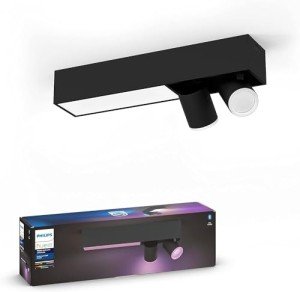A Comprehensive Guide to Buying Kitchen Lighting in the UK
When it comes to kitchen style, lighting plays a crucial role in performance, looks, and total ambiance. Picking the best kitchen lighting can considerably improve how you use area, affecting whatever from meal preparation to entertaining guests. With the vast range of choices available in the UK, it can be intimidating to choose the ideal kitchen lighting. This guide intends to simplify the process and offer important insights into the different types of kitchen lighting, factors to consider, and tips on making notified choices.
Types of Kitchen Lighting
Understanding the different types of kitchen lighting is vital for attaining a well-lit space. Each classification serves a special purpose and can be utilized to produce a layered lighting impact.
| Type of Lighting | Description |
|---|---|
| Job Lighting | Provides focused lighting for particular tasks, such as cooking, reading recipes, or washing dishes. |
| Ambient Lighting | Deals total illumination for the entire kitchen, typically through overhead fixtures or ceiling lights. |
| Accent Lighting | Emphasizes specific features or decorative elements, such as art work, backsplashes, or architectural details. |
| Decorative Lighting | Includes a stylistic or aesthetic touch, such as pendant lights and chandeliers that act as focal points. |
Task Lighting
Job lighting is crucial for making sure safety and efficiency while preparing meals. Under-cabinet lights, for circumstances, are a popular choice as they light up the counter top without including shadows, making tasks easier.
Ambient Lighting
Ambient lighting offers a warm, welcoming glow to the kitchen. This can be accomplished through ceiling-mounted fixtures, recessed lighting, or chandeliers. The key is to guarantee consistent light distribution throughout the area.
Accent Lighting
Accent lighting, utilizing fixtures like wall sconces or LED strip lights, directs attention to particular areas or functions within the kitchen. This kind of lighting can be particularly effective in showcasing lovely backsplashes, cabinet styles, or decorative items.
Decorative Lighting
Decorative lighting includes character and style to a kitchen. Pendant lights above an island or an elegant chandelier can become statement pieces, improving the kitchen's total style.
Aspects to Consider When Buying Kitchen Lighting
Picking the proper kitchen lighting includes evaluating a number of vital aspects to guarantee you make the finest choices for your space.
Layout and Size of the Kitchen
- Comprehend the dimensions of your kitchen and determine crucial work locations. The layout will figure out how you disperse lighting fixture.
Performance
- Consider how you utilize the kitchen. If you often cook or host, opt for job lighting. If click the next site as a dining area, ambient lighting will also be vital.
Design and Aesthetics
- Make sure lighting fixtures complement the kitchen's style. Whether modern, traditional, or eclectic, the style must balance with other aspects.
Color Temperature
- Light color significantly affects the ambiance. Warmer tones (2700K-3000K) produce inviting environments, while cooler tones (4000K-5000K) are much better suited for task-oriented locations.
Energy Efficiency
- Consider LED choices, as they consume less energy and have a longer life-span compared to incandescent or halogen bulbs.
Dimming Capability
- Integrating dimmer switches allows versatility in changing light strength for various activities.
Tips for Buying Kitchen Lighting
When looking for kitchen lighting, keep the following tips in mind:
- Measure First: Measure the spaces where you prepare to set up fixtures to ensure they fit well.
- Mix Fixtures: Combine various kinds of lighting for a balanced approach, mixing task, ambient, and decorative alternatives.
- Think about Placement: Pay attention to the height at which you install fixtures. For islands, pendants need to hang 30-36 inches above the surface area.
- Assess Brightness: Look at lumens instead of watts; brighter doesn't always imply much better in terms of functionality.
- Choose Quality: Investing in quality fixtures will conserve you cash in the long run due to toughness and reduced upkeep needs.
Frequently Asked Questions (FAQs)
1. What is the very best type of lighting for kitchen jobs?
Task lighting, such as under-cabinet lights or pendant lights over work surfaces, is perfect for kitchen tasks as it supplies focused illumination.
2. How do I pick the best size of pendant lights?
A general guideline of thumb is that the size of the pendant need to be around one-third the width of the island. If your island is 4 feet large, look for pendants that are around 12 inches in size.
3. Can I use a dimmer switch for all kinds of kitchen lights?
Not all lights are dimmable. Check the item specifications before installation. LED lights and some fluorescent lights are more most likely to need suitable dimmer switches.
4. How can I improve my kitchen lighting without significant renovations?
Think about incorporating plug-in under-cabinet lighting, stylish floor lamps, or battery-operated LED lights to improve lighting without extensive changes.
5. Is it necessary to work with a professional to install kitchen lighting?
While easy setups can be done individually, it's a good idea to work with a qualified electrical expert for complicated setups to ensure security and functionality.
Picking the ideal kitchen lighting in the UK includes comprehending numerous lighting types, assessing important factors, and executing tactical ideas. By focusing on the kitchen's layout, performance, and design, house owners can produce a well-lit, inviting area that improves everyday activities and events. Whether starting a complete remodelling or a basic lighting upgrade, the right options will illuminate both the kitchen and the culinary experiences shared within it.

